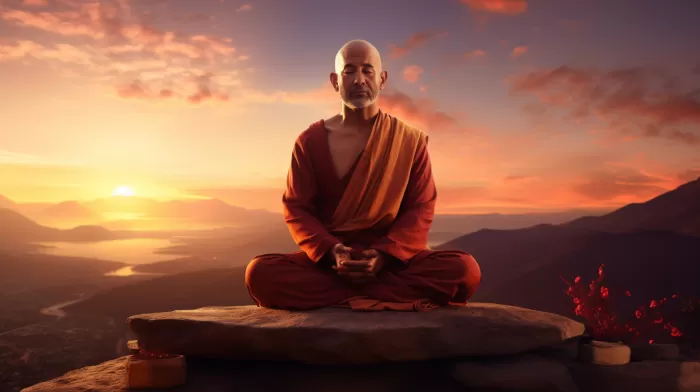Throughout history, various ancient practices have been considered strange or improbable, but eventually emerged as mainstream. Acupuncture was once rejected by the masses but has now become a popular treatment method for a range of conditions. Sungazing, which involves staring at the sun, is another centuries-old technique that is starting to draw attention. Sungazing is said to eliminate the need for eating and drinking.
The story of sungazing begins with Paramahansa Yogananda, an Indian yogi, and his autobiography. In this book, Yogananda speaks of fellow healers and spiritualists, one of whom survived without food or water for decades by harnessing the energy of the sun through their throat chakra. This concept may seem bizarre for those unfamiliar with yogic traditions.
A decade later, another yogi, Hira Ratan Manek, claimed to have lived without food for over 300 days by practicing sungazing. Manek is in his mid-70s now and has provided proof that humans can survive without food or water for a considerably long time, relying only on solar energy. Manek’s methodology is called the HRM phenomenon, after his initials, and it is believed to cure mental and physical health issues. It reportedly boosts brain function and confidence, while reducing fear and anxiety. After six months of practicing HRM, one can be free from physical illness, and nine months of dedication can render food unnecessary.
Manek has spent little time consuming food since June 18, 1995, occasionally sipping water or tea to be hospitable. During his fasting periods, Manek has been under medical observation. His first fasting period in 1995 lasted 211 days and was monitored by physicians Dr. C.K. Ramachandran and Dr. K.K. Shah. Manek’s second fasting period in 2000 lasted 411 days and was monitored by 21 medical doctors and scientists. Manek’s third observed fasting period happened in 2005, lasted 130 days, and was observed by a scientific and medical team from Thomas Jefferson University and the University of Pennsylvania. It was discovered that Manek’s brain cells were regenerating, and his pineal gland was expanding – results that defy expectations for someone his age.
While the science behind sungazing remains unclear, its procedure is straightforward. Sungazing should only be practiced an hour after sunrise and before sunset, as these timeframes do not expose the eyes to the sun’s harmful ultraviolet and infrared radiation rays. The daily sungazing ritual should start with looking at the sun for 10 seconds, increasing sungazing time by 10 seconds each day. After 7.5 months, you should be sungazing for 35 minutes per session, and after 9 months, this should increase to 44 minutes. It’s crucial not to exceed 44 minutes per session.
Though it may sound unconventional, sungazing can be a natural way to heal the body without medications. Manek is living proof that human bodies can survive with minimal resources, relying only on solar energy. This fascinating method is appealing to many who wish to explore alternative healing methods.
It’s essential, of course, to approach sungazing with caution and not to attempt it without consulting with a healthcare professional first.



